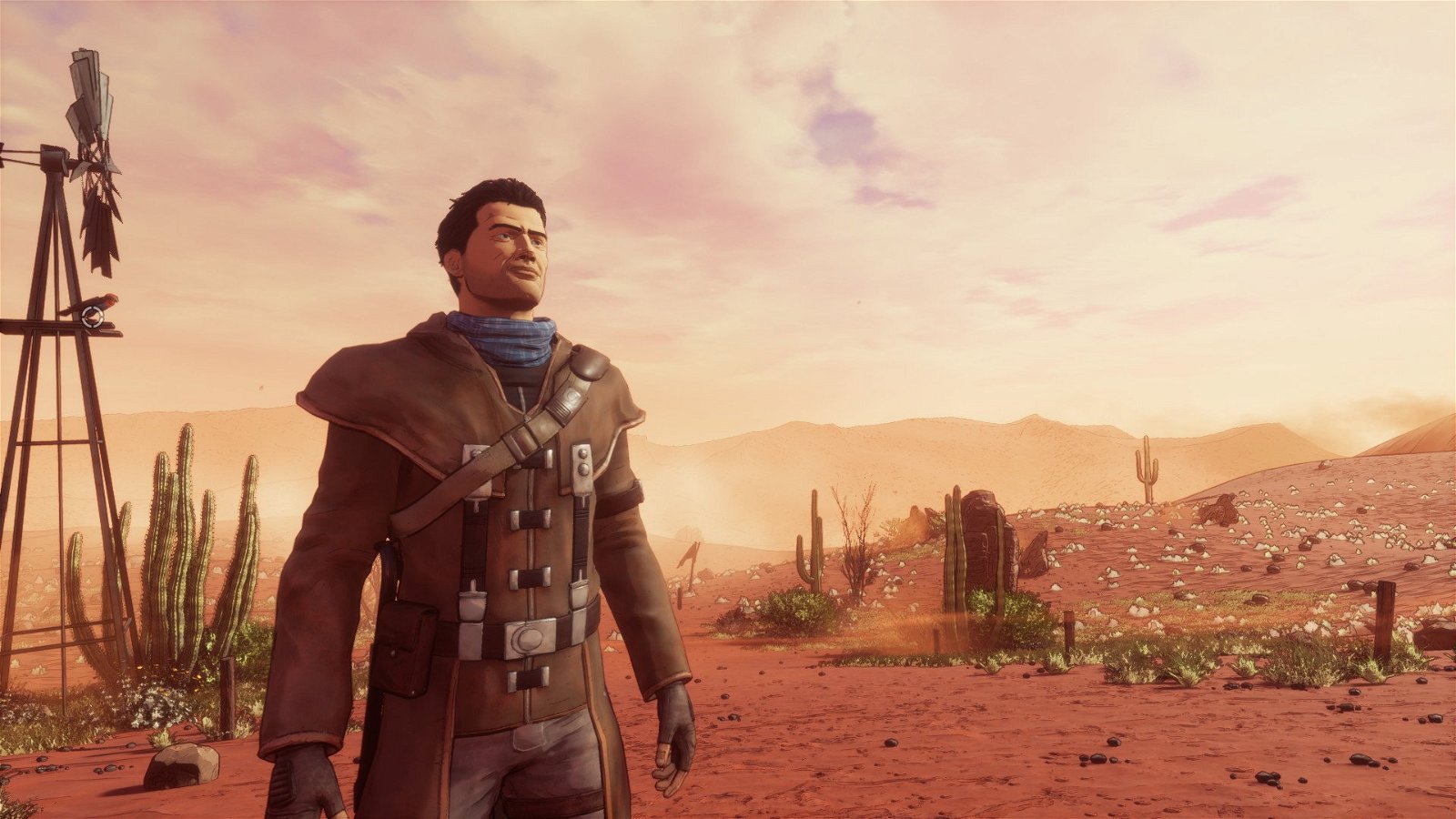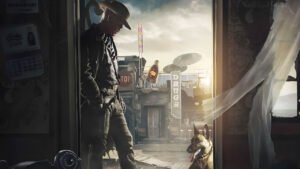Beneath A Steel Sky was one of the seminal adventure games from the mid 90’s.
It crafted a dark, dystopian world, built on the anxieties and fears of the time; making it an experience that, even decades later, is still beloved by countless people across the globe. Now, the creative team behind that experience, have rejoined and have delivered the sequel Beyond a Steel Sky for a whole new generation of players.
Set in the same universe; Beyond a Steel Sky takes the ideas seen in the first instalment and improves on them—delivering a more advanced visual experience that captures the comic book aesthetic the first one aimed to achieve. The visuals are stunning, and with the same creative minds behind the first title, it manages to capture that magic that made the series so captivating when it first launched in the heyday of point-and-click adventure games. We were lucky enough to chat to Dave Gibbons and Charles Cecil about this new instalment, along with the challenges and excitement that lead them to this new instalment in the Steel Sky universe.
CGMagazine: I would love to start by talking about what made you as a team want to return to the Steel Sky universe after so long considering the original game launched in the early 90s?
Charles Cecil: So, the reason is that back in all 1994, Dave, Revolution [Software], and I collaborated on the original game; and we were really excited by the reception, and we liked the idea of doing a sequel. But the appetite amongst publishers for adventure games was declining. Everybody was obsessed with PlayStation, and they thought people wanted visceral games. By the end of the 90s, the consensus from publishers was that the PC was dead, and that adventures just don’t work anymore. From there everything kind of went quiet for a while. But then, several things happened recently, or in the last decade or so. One of the most important was that the iPhone launched, and the opportunity for developers to self-publish their own titles, the titles that publishers weren’t prepared to cover.
What that allowed us to do was reinvent the game when we published Beneath a Steel Sky on the iPhone. The original resolution was just 320 by 200, which by extraordinary serendipity, was the resolution of the iPhone at that time. We were able to appeal to a much broader and a much wider iPhone audience, and that allowed us to reach out, build back the community, get the opportunity to meet our fans, and then start funding our own games; which was, you know, absolutely amazing. And so, Dave and I got back in touch a few years ago, and it felt like actually the time was right. And Dave emailed me about a story that he’d actually written for the sequel back in 1995. So, it’s…you know, taken 25 years between that and actually, you know, being able to publish the game.
CGMagazine: Oh, wow.
Dave Gibbons: Yeah, I think from my point of view, I really enjoyed the collaboration that Charles and his team, and I had; like, with the first computer game I’d really been involved with at all. I loved the collaboration—that’s the most important thing for me. And it’s been so in comics as well; I have to like my collaborators and enjoy working with them. And we had such a good time doing that first instalment that I was always keen to get it going again. But as Charles has said, it sometimes takes a while for the planets to come into alignment.
But a few years ago, Charles was ready. And I was in a position where I was looking for a new project. And this seemed like the perfect thing to do. And also, because we moved on technically, from those early days when the most advanced piece of technology we had was a fax machine, and everything would have to be faxed or mailed. Now I sit at my Wacom drafting tablet, draw stuff out, press a button, and a few seconds later, the full color works on Charles’s desktop. The final presentation with the game is in fully rendered, all motion, all volumetric 3D graphics; that have been treated by a special toon-shader to look like I actually drew them, you know? There’s an outline around things.
So, on all sorts of levels, this was my perfect project to be involved in. And we have really enjoyed the process. And it’s great to see the game finally out there. And I think a lot of the fans of the first game are really thrilled that it’s back. And I think a lot of people who’ve never even seen the first game seem to be thrilled as well. So, it’s been a very good experience.

CGMagazine: Now, I want to touch on the fact that Beneath a Steel Sky was one of the seminal adventure games of the 90s and is considered one of the seminal cyberpunk video games. How was there ever a concern when approaching this title that it could be hard to live up to that legacy?
Charles Cecil: Thank you for that compliment. You know, that’s a very flattering view to say that when we wrote the original game, I think it resonated in 1994. It resonated with what’s happening at the time. I remember Dave and I talking at great length about how society was changing. It was the end of the Cold War. We thought it was one we thought there was world peace, and world peace would last forever. Now that the Soviet threat to be neutralized, Margaret Thatcher had liberalized the market, and everybody was getting very rich. People were inventing money but there was a dark side happening in society as well, of course. And so, what we were doing in the original game was trying to reflect some of the concerns that we imagined developing at that time. So, when we moved on to Beyond the Steel Sky, there were several things that were really important to us. The first was the people needn’t have played the original game, or even know anything about the original game at all. We also felt that the relationship between Foster and Joey.
But society has moved on, and things have changed. So what we needed to do was reflect society now. Take what people love, but then surprise them, because if you ask people what they want, they’ll say, well, we want exactly the same as what we had before, but different. And what they really want is to have a respect for what went before to get the sense of what went before but actually to be surprised with new things. And that’s what we very much tasked ourselves with doing. So, you know, we’re looking now at an era where there is surveillance, considerable extensive, concerted surveillance. You have elements in China, like social credits, which I think is fascinating, not least because when Chinese people are in the West, we find it really sinister. But when you talk to Chinese people, they say, well, it stops people spitting in the trains, it actually makes people act much better. So, we’re living through an incredibly tumultuous time. And what we’re trying to do in this game is, in some ways, reflect society back at itself in the same way that Beneath a Steel Sky did in 1994, or indeed, without wishing to be too pretentious in 1984 did back in the 30s, in relation to the Soviet era.
Dave Gibbons: Yeah, I wouldn’t want to overstate too much the political aspect of this, I mean, certainly, what we really wanted to do is a game that people would enjoy playing that we could have some creative fun with. But I think inevitably, you have to reflect the society that you’re living in. And as Charles says, this future didn’t turn out quite the way he wanted. We thought it was a good idea to have a look at a utopia in this game. Although it’s set in the same city and shares a lot of the same characters, It gives the whole place a completely different feel. So, I really like the way it’s kind of changed what you might have expected from a sequel. I think the other interesting areas that it looks into, we spoke about Joey, his boss’s best friend, a robot. You know, it gives a chance to explore the whole artificial intelligence thing. And what’s really going on in Union City in its latest game, is that Joey’s been given the order by foster earlier to make the people happy. And it’s how an AI interprets that as an instruction.
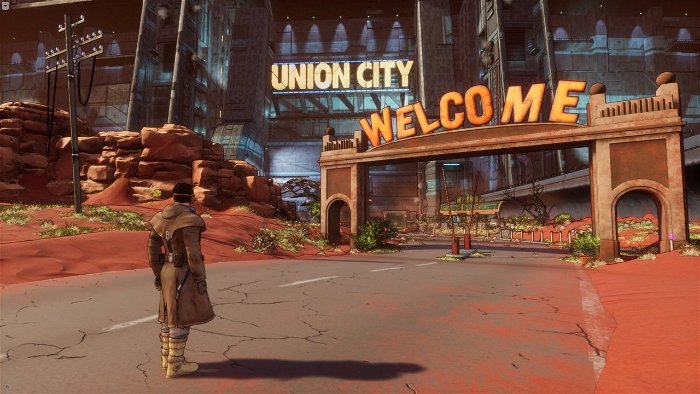
CGMagazine: The original Beneath a Steel Sky was made at the time when pixel art was the ideal choice for adventure game graphics, and it gave the game a very specific look. How did the new art style come to be?
Dave Gibbons: Well, with the original game, as you say, the graphic style was very much tainted by the technology of the time. And I remember assembling the individual sprites, you know…pixel by pixel, using a program called Deluxe Paint on an Amiga computer; and that was really quite primitive. And all the backgrounds were hand-drawn and hand-coloured, and then scanned in and composite with the sprites. And we did a comic book to go along with that first game, which was a very highly detailed comic book with full colour artwork, and very, very generous and dramatic pictures. That didn’t look anything like the gameplay. But having seen those fully rendered figures, when you look at the game, you think, “oh yeah, this isn’t just a few sprites that are shuffling around the screen.” This is really cool with the UI in a long. black leather coat.
So, we were doing a bit of a magic trick there. But what we’ve been able to do this time around is to actually make the graphics of the game look like a really well drawn comic strip. And then I was able to, as it were; reverse engineer the comic book that again, accompanies it to mimic the style of the game. So here, what we’re doing is: rather than doing a trick, we’re actually doing a seamless transition between the comic book—which is itself an emotional world—so it has sound, and it has movement, and it has atmospheric music to make that seamlessly more into the very beginning of the game. So, we’ve maintained that comic book tradition, but really handled in a completely different way.
Charles Cecil: Okay, so once we jumped in, then what we did was: our technology guys met with Dave, and we tried to work out how we could create a comic book look in real time using post processing. The vision for this game was that any image, any screenshot would look as if it could have been hand drawn by comic book artists. Dave very much grew the art style. But then, retrospectively; Dave, when you came to write the comic book, you were looking at the style that you defined for the technology, and once that was done, you then created the comic book to match the style that we then achieved from the technology.
Dave Gibbons: Yeah, it was an interesting thing to do. I’ve never done anything quite like it before. And I should mention that there wasn’t only Chelsea’s technical team behind the way everything worked, but also with a comic book. I was greatly assisted by my old friend Angus McCraney, who did a lot of the technical end of the drawing of the comic book, and getting it ready to be made into a motion comic. So even in the comic, it was not 100% me, but it was again, the thing that I enjoy: the chance to work with really talented co-creators and frames and the whole thing. Although it was quite complex at times, was a very enjoyable process.
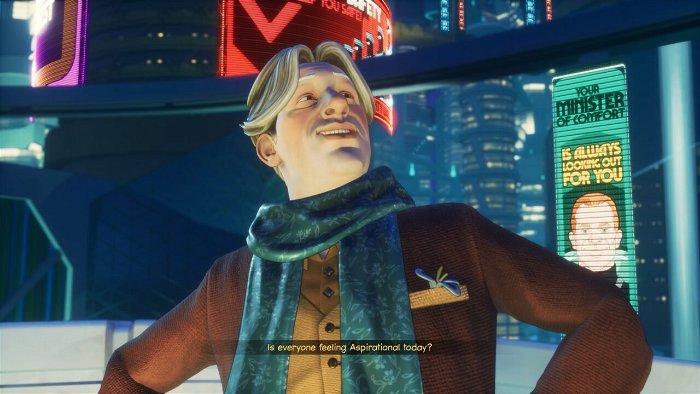
CGMagazine: Okay, now, this is a quick question for you. Dave—you have a very large body of work. And you’ve been involved in some of the most influential comics of the last while when approaching working on a game like this and the original Steel Sky. Was there ever worry that your past career or your career in general might overshadow this new project? And if so, how did you combat that?
Dave Gibbons: Well, no, I would say that my association with Watchmen has only ever been positive. I mean, it has opened lots of doors for me. And so, I’ve never felt it to be a burden. But what I have tried is to always explore new avenues; rather than stick in a kind of Watchmen rap, and revisit that kind of comic book, and that same style and those same kinds of stories. I’m always looking for new projects to do that I can give a distinctive look, and I feel fresh about. And working with Charles and his team felt like something that I personally would enjoy. What I’ve always found is—if you do work that you enjoy doing, it always comes out in a positive way.
CGMagazine: Do you feel that people that might have lived through the adventure games of the 90s might enjoy different aspects of this game? And are there nuances that playing the first game will help you pick up on?
Charles Cecil There are several reasons why actually, the relationship between video games and comic books works so well. The first one, of course, is from a stylistic perspective—and that is in an adventure game, we spend an awful lot of time looking at the background, because you’re looking for hotspots that will give you a gameplay advantage. And by providing that comic book look, it means that it is clearer to see what the objects of importance are. But secondly—comic books, of course, convey really, really concisely: situations, and emotions, and the characters. So, in a relatively short time, we were able to introduce the character and talk about the background of the universe in the game.
Dave Gibbons: It’s a wonderful way to present the backstory, so that when the player hits the game, they’ve got all the information—they know what the characters are about, they know what the mission is, they know what the kind of jeopardy is as well. And it just works really well. I mean, the thing that you learn during comics is to be very focused and to distill all the facts down in an easily accessible way. I mean, you can play this game with no knowledge at all of the first game—since everything is explained to you—but if you have played the first game, obviously you’re going to get that thrill of seeing things that you recognize you know that make you feel more inside that’s what’s going on. So, my hope would be that people his first exposure to Steel Sky is this game. We’ll be sufficiently intrigued to go back and check out the original game which is still available.
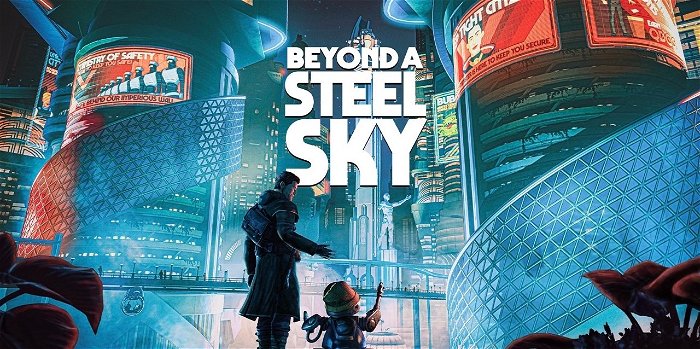
CGMagazine: Fantastic! Now is there anything people should know before entering this game, and do you believe people who might not know anything about the Steel Sky universe should check this game out even if they might not be interested in adventure games in general?
Charles Cecil: What we do, what we work very hard at; is making sure that the puzzles are logical within the context of the story, within the context of the game world at that point, and within the context of the motivations of the characters in that game world. And we have a reputation for doing that very well. And one of the greatest compliments that people pay us is that when you’re playing through the game, it doesn’t feel like the puzzles are a chore, because the puzzles are directly related to the story.
So, we hope that people will be encouraged to investigate the world, because the more they investigate the world, the clearer the solutions will become. We have a hidden system as well. So, if you get completely stuck, then you can go check out the hints. But broadly, this is a game that’s intended to appeal, both to adventure fans, but also to broaden audiences as much as possible, because of the structure of the puzzles and the fact that they’re also logical.
CGMagazine: Well Dave, and Charles thank you so much for your time, and we’re really looking forward to Beyond the Steel Sky.
To read the original article pick up the print or digital copy of CGMagazine
